When I had the amazing opportunity to go to India for a work trip (a country I had always wanted to go to), I knew I had to try to see wild tigers. I am a scientist for the eMammal citizen science camera trap program where I work with K-12 teachers and partner with them in getting our research into their classrooms (for the results of this program, read “Do Kids Make Good Citizen Scientists? Discoveries from eMammal Camera Traps Around the World“). In our program, the students learn science by conducting real science, and the photos they capture of animals on their school grounds are used by us in real research.
In 2014, we started a partnership with the Bombay Natural History Society (BNHS). This meant I needed to train the scientists and teachers in our protocol of setting up camera traps. This was why I was going to India. Since I was making the long trip to over there and I had always wanted to India, I decided to extend my trip to a visit to the beach in Goa and to try to see tigers in Tadoba National Park.
My trip to Tadoba National Park started with a flight from Goa to Nagpur. There, a BNHS collaborator on the project picked me up from the airport. I was super lucky; one of the schools we were working with was in tiger habitat. He was a scientist working in the national park system nearby and would be helping the school with their camera traps.
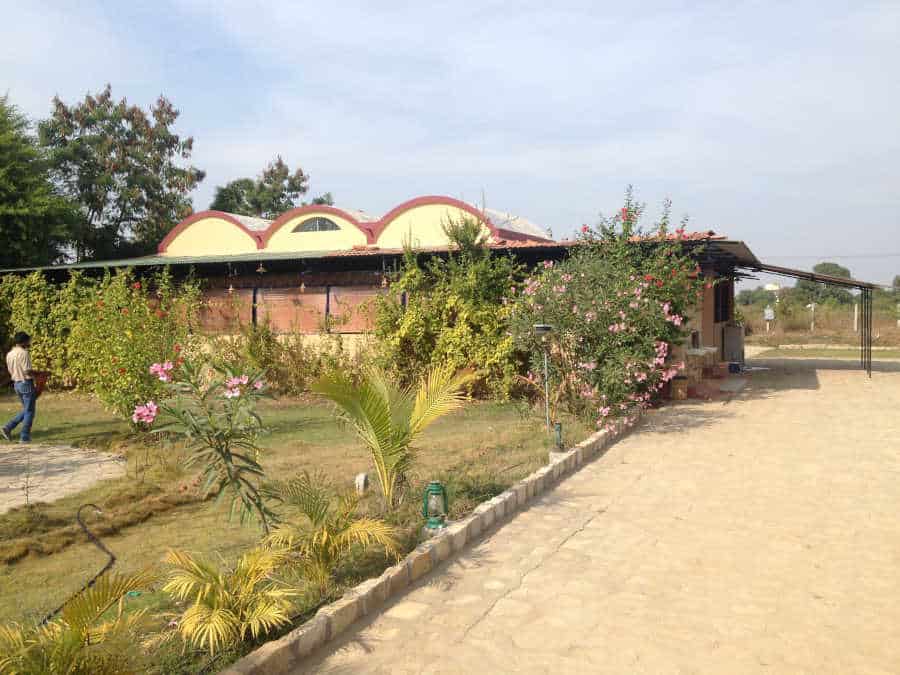
From Nagpur, we took about a two hour drive to a small hotel just outside of Tadoba. I had two days to try to see tigers: Sunday and Monday. Our adventure started that afternoon.
Please note: I only had my iPhone as a camera. Therefore the quality of the photos do not reflect the true beauty of Tadoba.
Community Area Around Tadoba
The park is actually closed on Sundays so the first afternoon we took a safari around the park borders in a mixed use area where tigers live, but people are also allowed to use the area as well. In India, tiger reserves have to be created with buffer areas around them. These areas are still protected, but the local community is allowed to enter them and use them to a certain extent (for example for collecting wood).
In contrast, people can only enter national parks for tourism and the local community cannot live there (which can actually cause conflict between the communities, wildlife, and the government). Because tigers are such wide-ranging animals, protected areas areas usually do not have enough space alone for them to exist, so buffer areas and corridors are needed to support their larger ranges and ensure gene flow between parks.
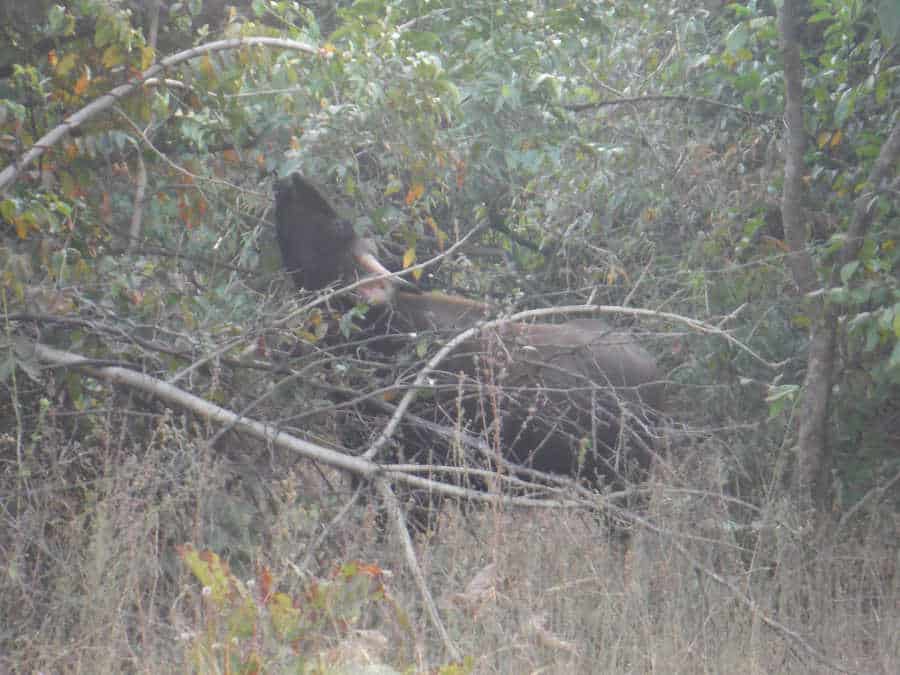
Driving around the community area, we saw gaur (Indian bison), a blue bull, and spotted deer or chital. The blue bull is such an usual animal, but I was not able to get a good photo of it. I loved the gaurs and especially loved seeing their babies.
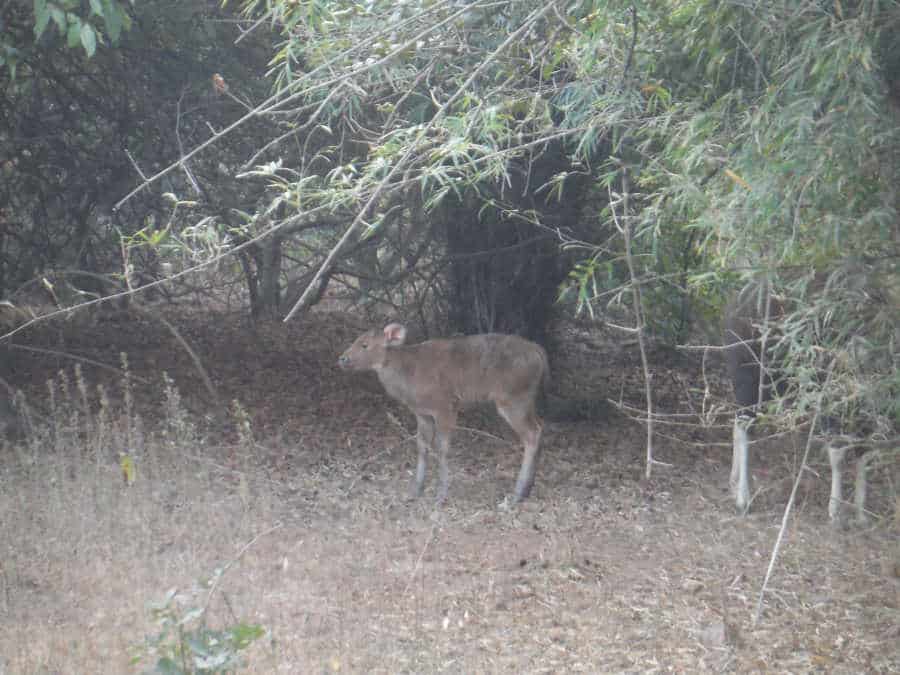
We drove around for hours enjoying the ungulates but were still hoping that we would see a tiger. Because we were in the community area, people had doubts that we would see one and thought our chances of seeing a tiger would be much higher in the national park the following day. However, to our surprise, we turned a corner and there it was: the tiger I so badly wanted to see! He/she was just laying there by the side of the road. And we saw it in the community area, where none of us were expecting to see it.
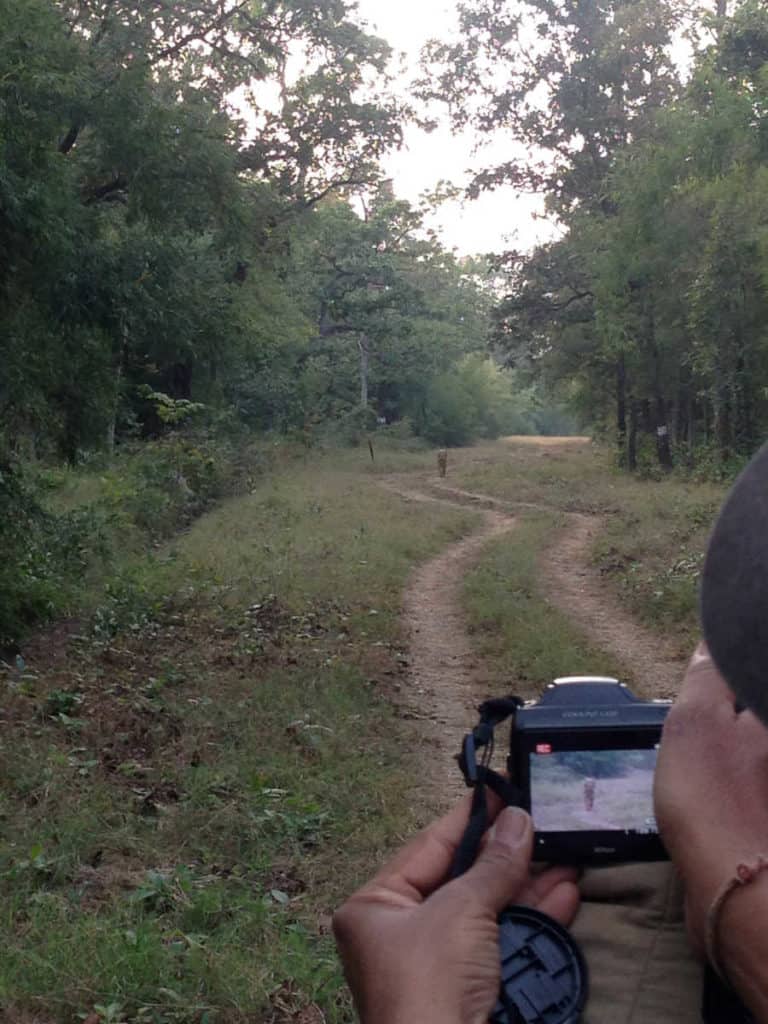
It was really quite shocking to see it in the community area, even though tigers definitely use these areas. The scientist on our project was also taken aback, but tigers do not know boundaries!
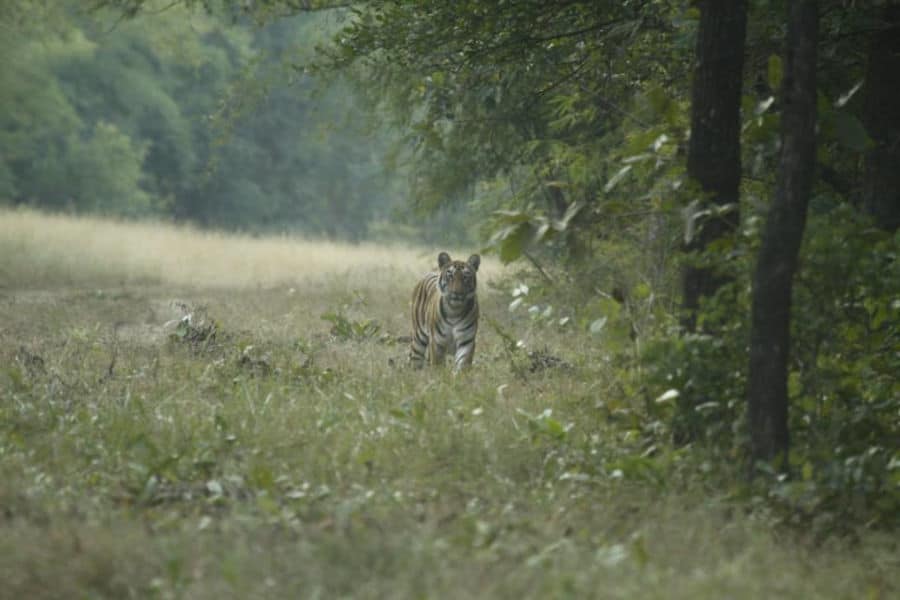
I cannot even explain to you how amazing it is to see a wild tiger. They are such beautiful, majestic animals. It’s difficult to believe that the even exist because it is such a surreal experience.
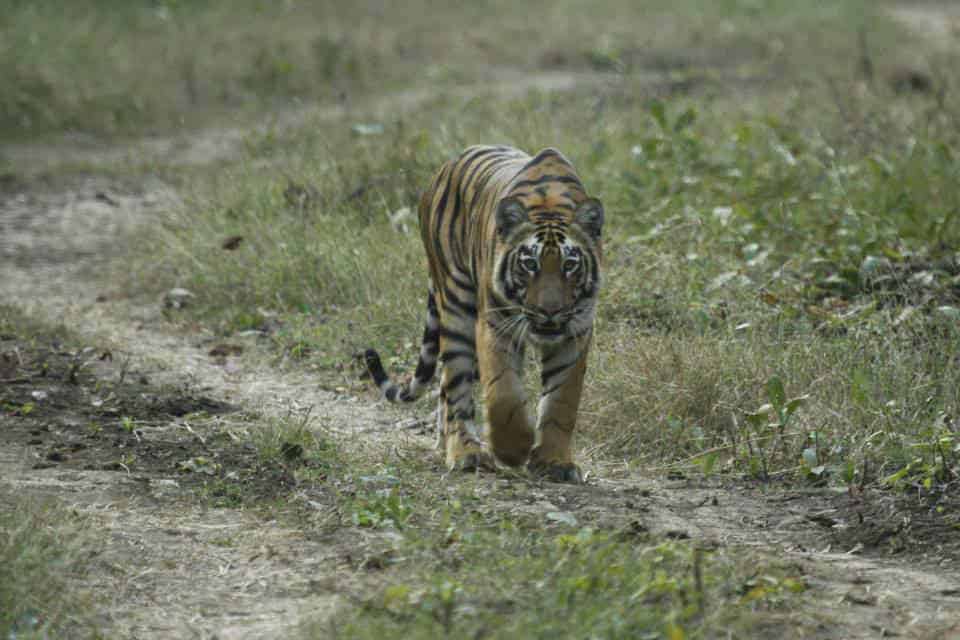
We were super lucky and the tiger did not run off. It just laid there for a few minutes. Then when it got up, it actually started walking towards us. This wasn’t scary; the tiger was just really relaxed. S/he then made a turn before our vehicle and quietly walked into the forest.
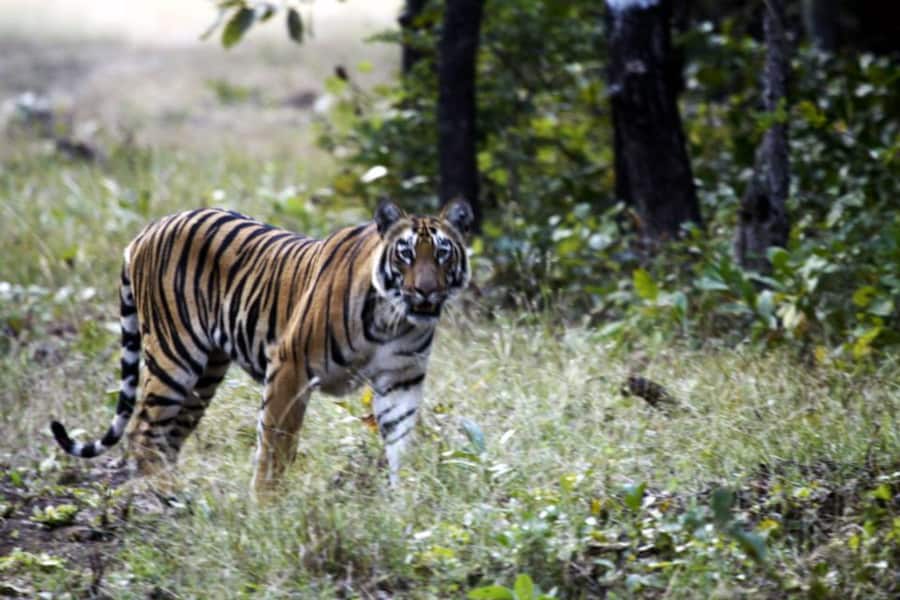
I was so happy to see a tiger and now the pressure was off for Tadoba the following day. We had the most amazing Indian food for dinner and I went to bed a happy girl.
Tiger Safari at Tadoba National Park
The next morning we had to get up super early so we could get to the park before sunrise. Early morning and evening are key times to see animals. Because it was so early, it was super cold. I did not bring enough layers! The vehicle is open in the back (no windows) so I had to wear blankets on my lap to stay warm.
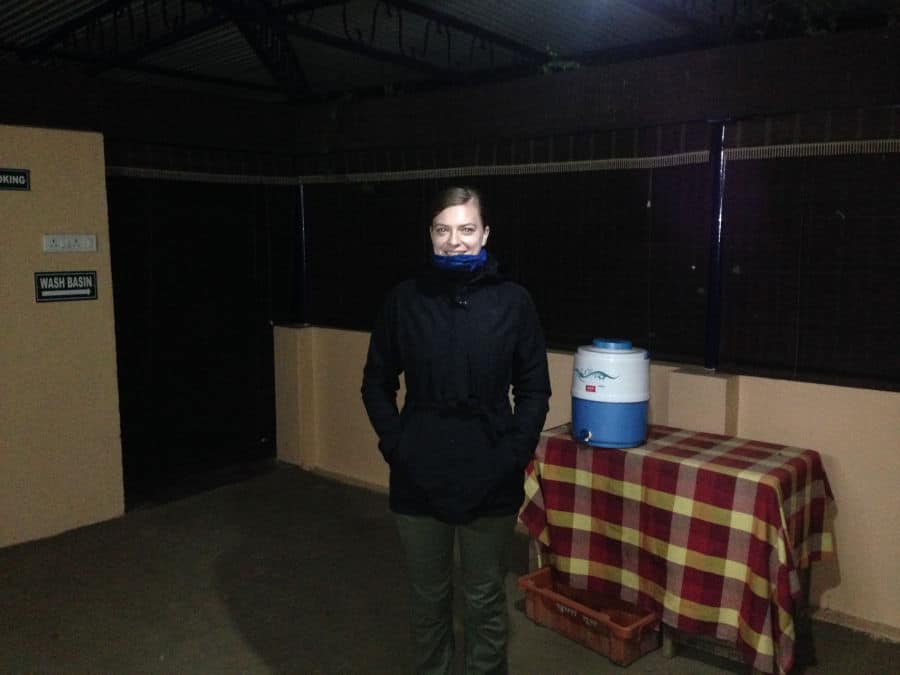
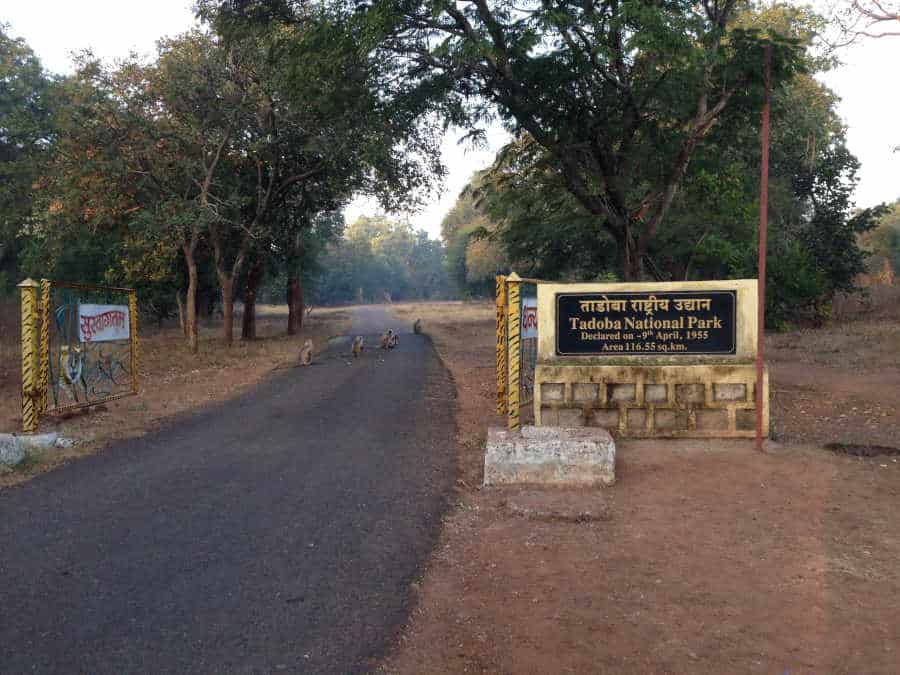
We started seeing evidence of tigers right away. Our guides found tiger tracks, which is obviously a good sign! However, the tigers remained elusive. The guides connect with each other via radio so we knew when other cars saw tigers. If we were in the area, we would quickly drive over to see if we could catch a glimpse of the tigers others saw.
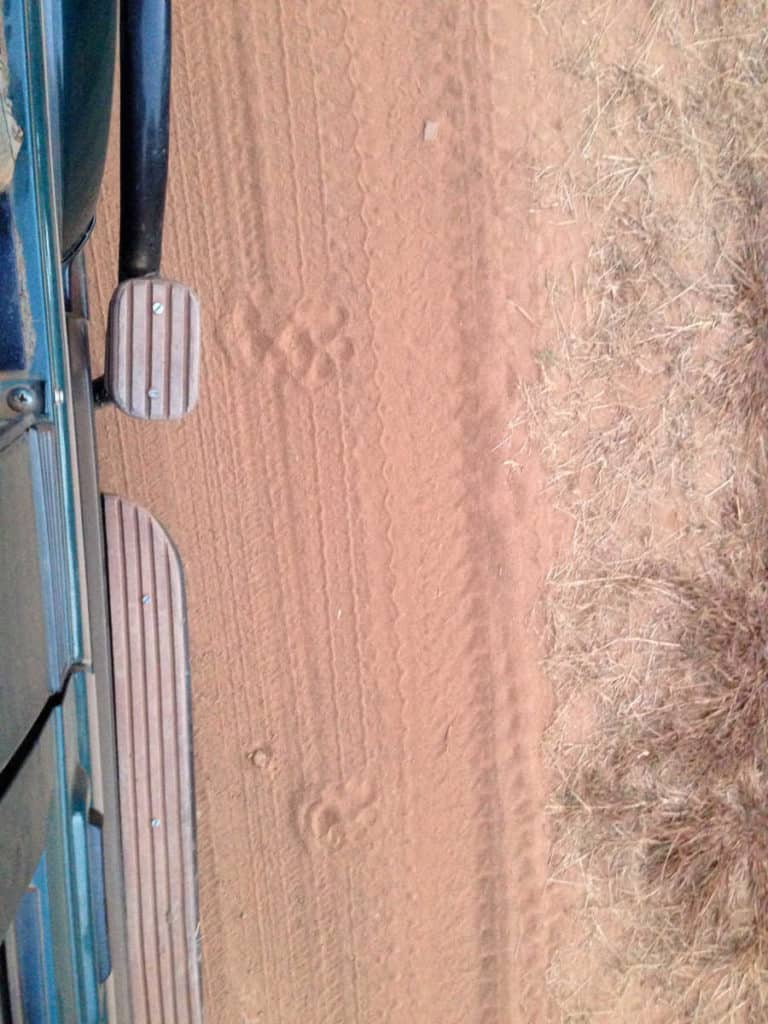
We saw lots of animals in the park including langur monkeys, sambar deer, spotted deer (chital), peacocks, crocodiles, and dholes. Still no tigers.
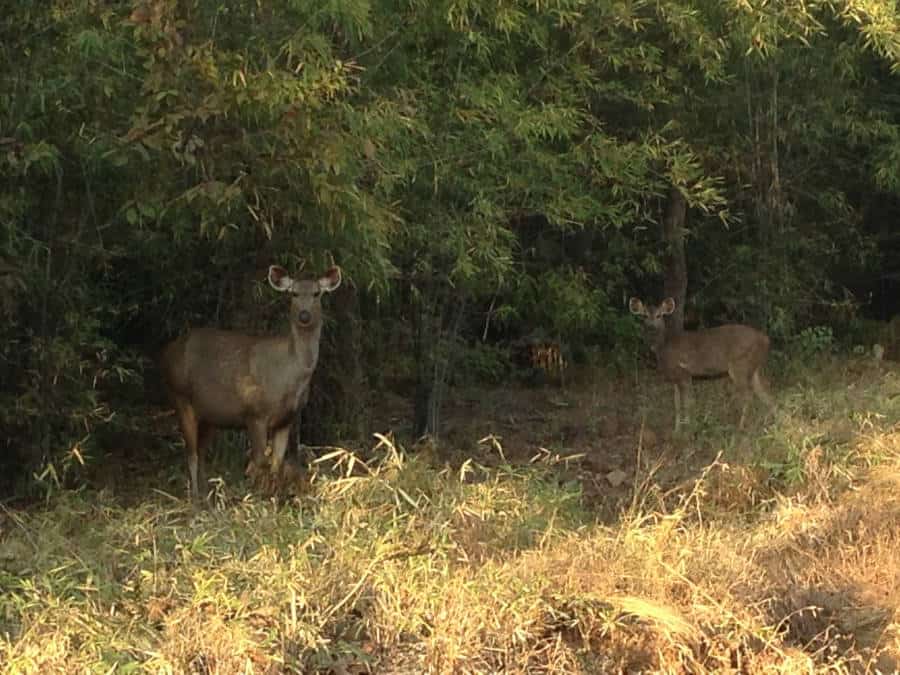
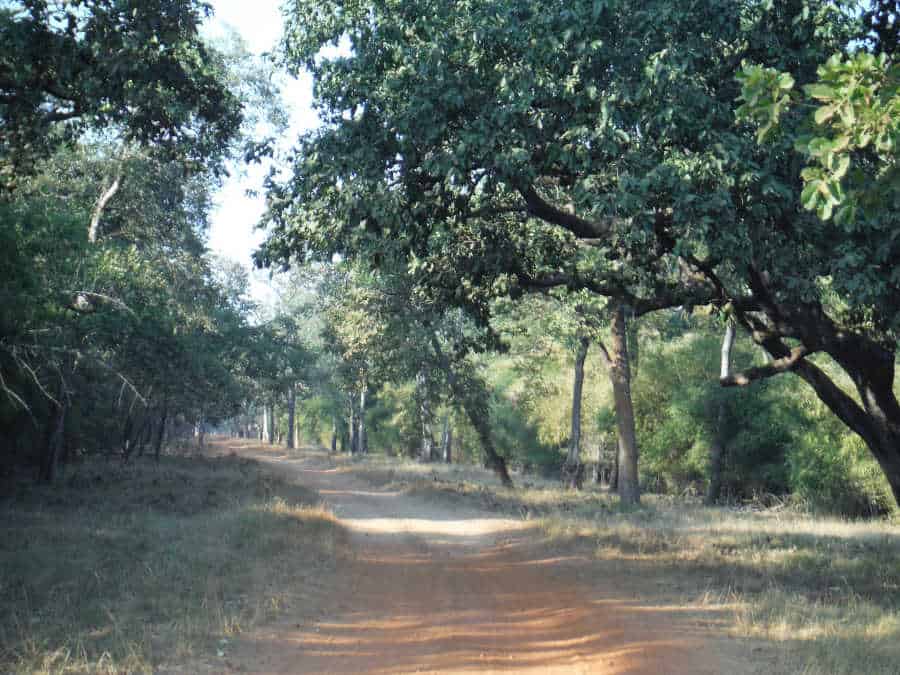
Dholes are actually a more rare species to see in the park and I was delighted to see them. Like tigers, they are endangered. We got a great glimpse of them and it was really fun to watch them playing with each other.
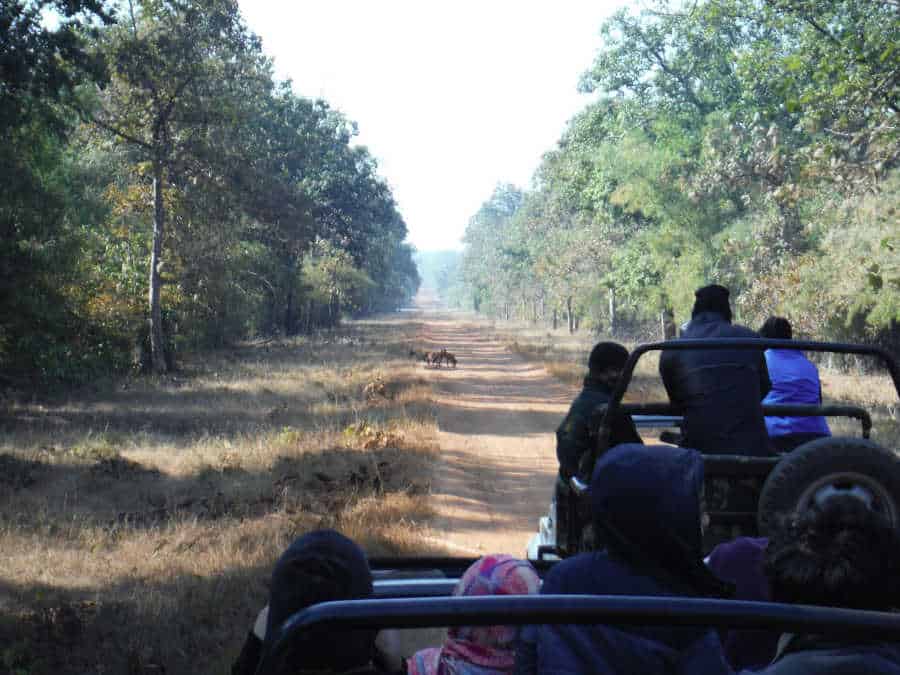
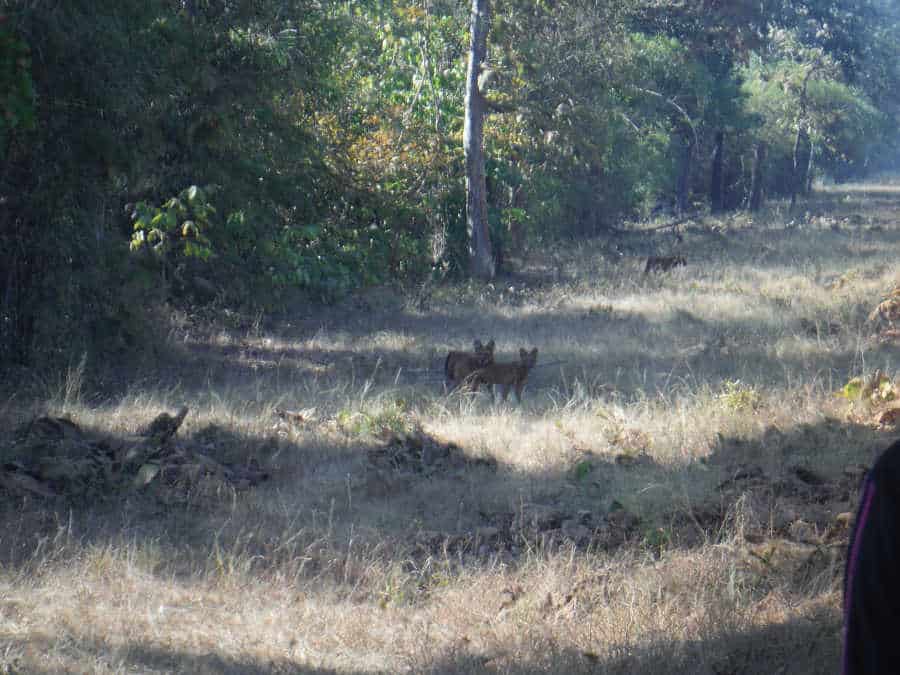
Over and over again, we got the call that another group saw tigers. We rushed over to that area and searched and searched, but every time the tiger was nowhere to be found.
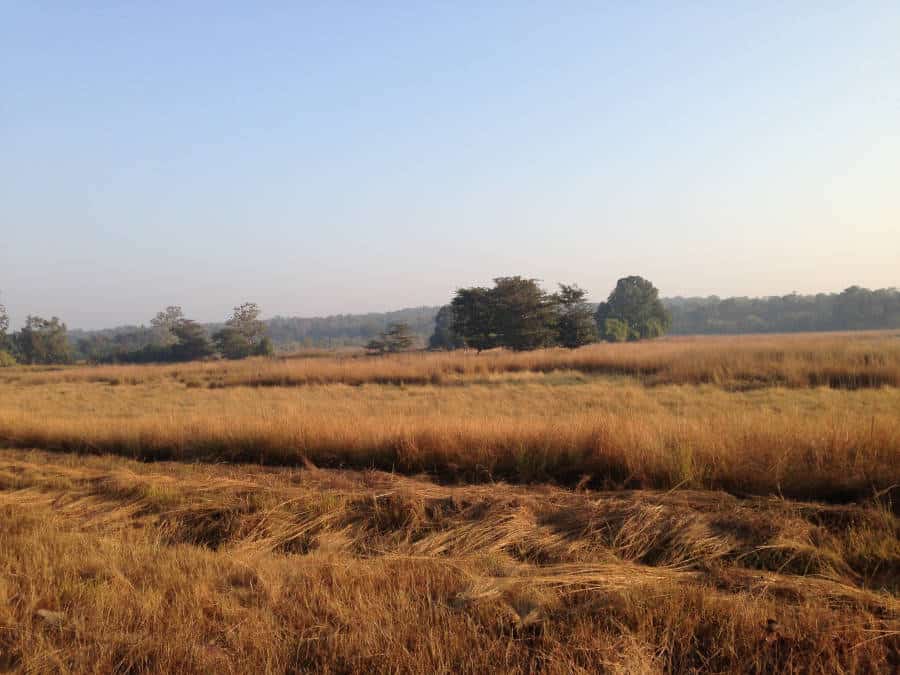
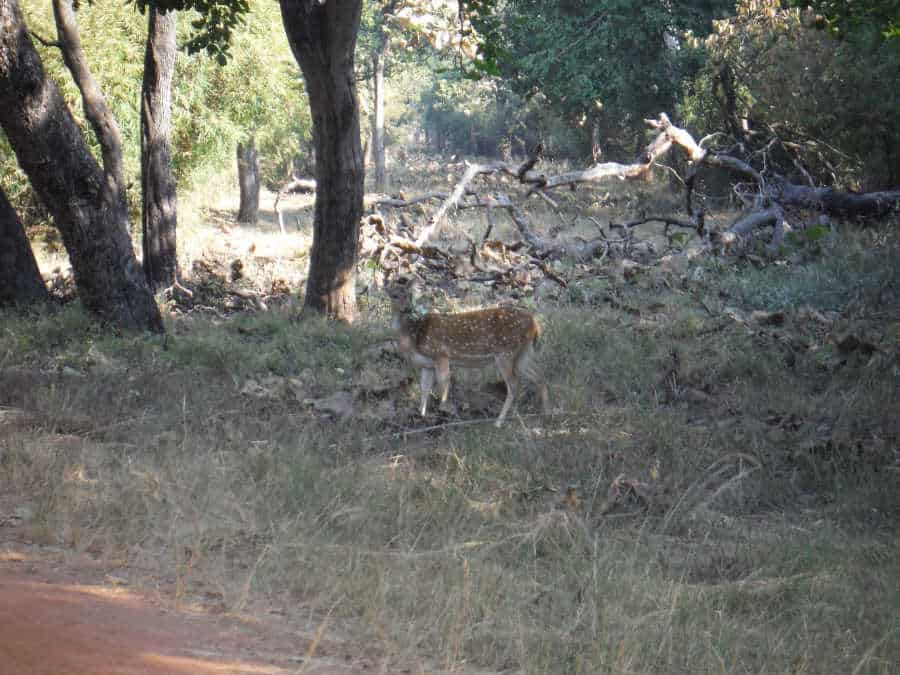
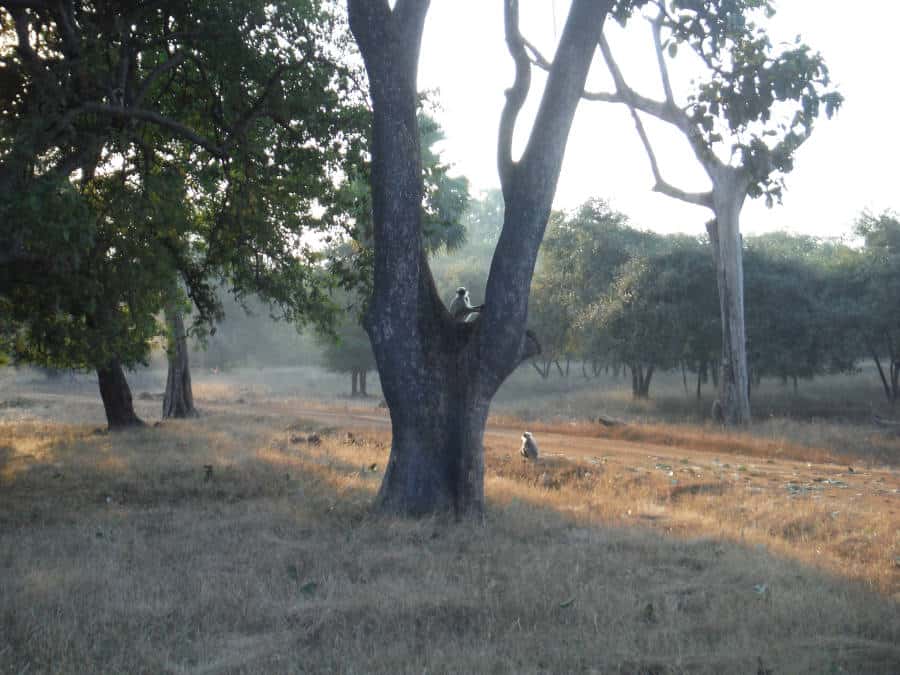
We ended up leaving the park without seeing a tiger. Tigers are wild animals and you can’t control where they will be. I was not disappointed though for several reasons. I saw one so well the previous day outside of the protected area and I saw so many other amazing animals (like the dholes!). But even if I hadn’t seen a tiger at all, I still would have understood that you cannot control nature and would never go to a place that guaranteed sightings because they are probably up to something shady (read “5 Guidelines for Ethical Wildlife Tourism” for more on this). I loved my safari at Tadoba National Park and had such amazing wildlife adventures!

Love this post? Share it with friends!



